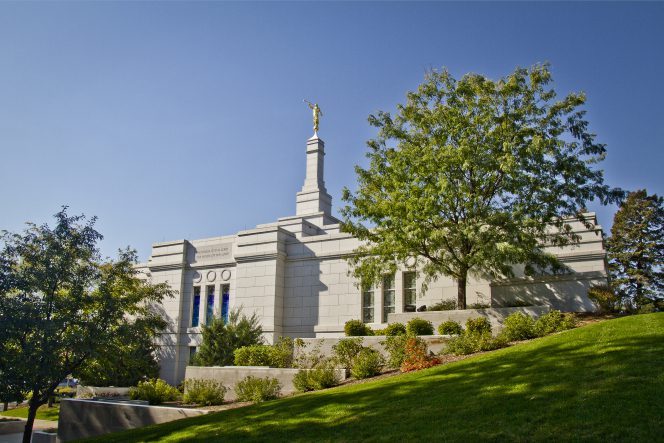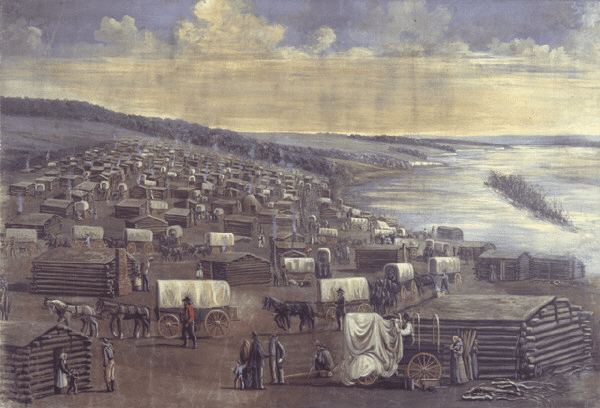
I would like to wish everyone out there a happy Pioneer Day.
I’ve thought from time to time about the significance of the pioneer experience for the culture and faith of today’s Latter-day Saints, and here’s one thing that occurs to me:
That process of crossing the plains built a sense of “peoplehood” that has, historically (and, I hope, still today), made membership in the Church of Jesus Christ of Latter-day Saints distinctly different from membership in many other churches. Being a Mormon isn’t merely a matter of denomination. (And even denominationalism is far less important in American Christianity today than it was even a generation or two ago.) It’s more encompassing than that. Having a distinct geographical “homeland” in the Great Basin makes being Mormon at least slightly more like being Jewish than like being, say, affiliated with the Assemblies of God or the United Methodists or the Evangelical Lutheran Church in America. (A very distinctive doctrine and a quite different ecclesiastical organization are also factors, of course.)
The Community of Christ, formerly known as the Reorganized Church of Jesus Christ of Latter Day Saints, although much, much smaller than the organization based in Salt Lake City, is the largest organization, after the Utah Mormons, to emerge from the events of the Restoration. But it lacks the pioneer legacy, and it has — in my view, largely though not entirely for that very reason — long felt more like a Protestant denomination than like the Latter-day Saints. And it has been going even further that way over the past several decades.
For one thing, the epic story of the early Restoration and the westward migration also give a unique texture to Mormonism, and to each family with that heritage. We have a history — a historical “myth,” if you will (by which I don’t mean a “falsehood” but rather an archetypal narrative) — that is exceptional in both its nature and its content. Decades ago, while browsing through the then-new Harvard Encyclopedia of American Ethnic Groups (or whatever it was called) in a library in Cairo, I was surprised and quickly delighted to see that Mormons were listed as an “ethnic group,” which I thought very perceptive. Years later, Joel Kotkin took the same insight in a portion of his fascinating book Tribes and developed it in an interesting direction.

But recent converts also inherit the legacy of the pioneers, and the hymns and stories and art that go with it, creating a culture that has continued to expand and to assimilate new arrivals. (See this example, a favorite of mine.) The pioneer experience welded Mormons together as a people, such that even those who leave the Church remain, in many cases, distinctively Mormon. I expect that few of those who, for whatever reason, leave the Episcopal Church spend hours each week running anti-Episcopalian websites and posting anonymously on furiously bitter anti-Episcopalian message boards.
Those are just hasty thoughts. But here’s a nice collection of quotations about the Mormon pioneers, some of which may be new to you:
And, finally, here’s a wonderful recording of William Clayton’s great pioneer anthem “Come, Come Ye Saints,” sung by the Mormon Tabernacle Choir and accompanied with moving video:
Posted from Victoria, British Columbia











